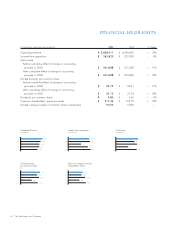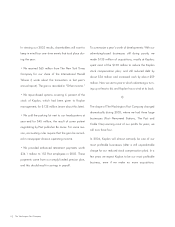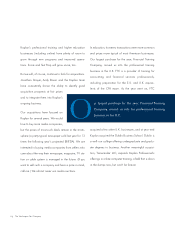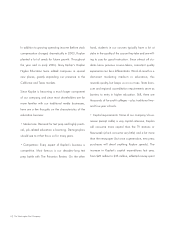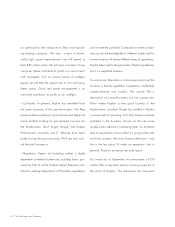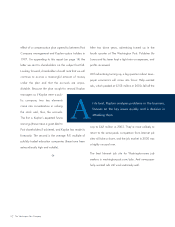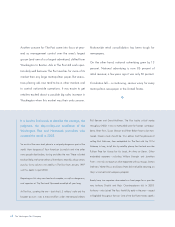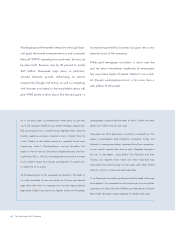Washington Post 2003 Annual Report Download - page 9
Download and view the complete annual report
Please find page 9 of the 2003 Washington Post annual report below. You can navigate through the pages in the report by either clicking on the pages listed below, or by using the keyword search tool below to find specific information within the annual report.
effect of a compensation plan agreed to between Post
Company management and Kaplan option holders in
1997. I’m appending to this report (on page 14) the
letter we sent to shareholders on this subject last fall.
Looking forward, shareholders should note that we will
continue to accrue a meaningful amount of money
under the plan and that the accruals are unpre-
dictable. Because the plan sought to reward Kaplan
managers as if Kaplan were a pub-
lic company, two key elements
came into consideration in valuing
the stock and, thus, the accruals.
The first is Kaplan’s expected future
earnings (these mean a great deal to
Post shareholders if achieved, and Kaplan has made its
forecasts). The second is the average P/E multiple of
publicly traded education companies (these have been
extraordinarily high and volatile).
✧
After two down years, advertising turned up in the
fourth quarter at The Washington Post. Publisher Bo
Jones and his team kept a tight rein on expenses, and
profits increased.
With advertising turning up, a big question about news-
paper economics will come into focus: Help-wanted
ads, which peaked at $155 million in 2000, fell all the
way to $62 million in 2003. They’re most unlikely to
return to the same peak; competition from Internet job
sites will take a share, and the job market in 2000 was
a highly unusual one.
The best Internet job site for Washington-area job
seekers is washingtonpost.com/jobs. And newspaper
help-wanted ads still work extremely well.
t its best, Kaplan analyzes problems in the business,
focuses on the key issues quickly and is decisive in
attacking them.
A
07 The Washington Post Company



